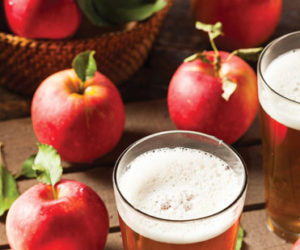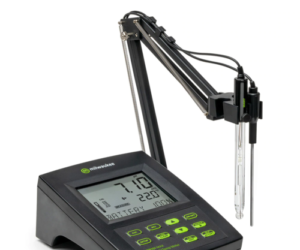Once you have the basic concept of making wine, be it from a kit, juice or fresh fruit, you can easily make other fermented beverages, including mead. Try using some of your new fermenting skills to make a tasty alternative to wine.
Ingredients and equipment
Mead is a fermented solution of honey and water, which can be either sparkling or still, sweet or dry. You will need to find a source of high-quality honey to ensure the best finished mead. Most supermarkets or food cooperatives stock at least two or more varieties of honey, or you can find a local producer. Keep in mind that you will need a large amount — for instance, a 5-gallon (19-L) batch can call for somewhere around 15 pounds (6.8 kg) of honey.
Many — in fact most — meadmakers add yeast nutrients to mead to ensure a complete fermentation as honey alone doesn’t have all of the nutrients needed for the yeast to work as well as it should. For the best results, choose a complete yeast nutrient for constant, thorough fermentation rather than just DAP (diammonium phosphate), which will cause the yeast to rapidly reproduce, but may exhaust that process and start producing undesirable compounds. You can also use a different nutrient in conjunction with DAP, such as GoFerm. Just like in winemaking you can use Campden tablets or potassium metabisulfite solution before pitching the yeast to lower the chances of contamination by killing wild yeast that are present in unpasteurized honey or must.
Most commercial yeast manufacturers carry a variety of yeast strains for making mead. For example, White Labs carries WLP720 Sweet Mead/Wine and Wyeast carries 4184 Sweet Mead and 4632 Dry Mead. You can also use some strains of winemaking yeasts, such as Champagne yeast (see some suggestions in “Tips from the Pros” on page 14). Your best bet is to start with a good recipe that lists a specific yeast strain or ask someone you know who makes a mead that you like to drink what they prefer to use.
Making mead requires most of the same basic equipment as home winemaking: a properly-sized fermenter that will accommodate a full batch of mead and has a wide enough mouth to allow you sufficient access to stir, a stainless steel or non-reactive spoon for stirring, a secondary fermenter — a glass or PET (polyethylene terephthalate) carboy is best — with an airlock, thermometer, racking cane, bottles and cleaning/sanitizing chemicals.
Techniques
The first step of any mead recipe will be combining the honey with water by simply dissolving the honey in the proper amount of water and stirring.
Once the honey and water are combined, add potassium metabisulfite or Campden tablets depending on the recipe and manufacturer’s recommendations and let unfermented mead sit overnight in a loosely covered container before pitching the yeast.
The next day, you can pitch the yeast. Mead can take a long time to fully ferment — as long as two or three months in the primary and six or more months in the secondary fermenter. Because of this longer fermentation, it is a good idea to use a yeast starter to be sure you have a big, healthy population of yeast cells right from the beginning.
Once the fermentation takes off, be sure to keep the temperature of the mead constant according to what the recipe and yeast strain manufacturer recommends. The yeast activity can cause the temperature to rise, which will create undesirable fusel alcohols. Be vigilant, keep the temperature low and be patient for the best results. Once the fermentation is finished, you can clarify it by bulk aging in the secondary fermenter until it clears or with a fining agent such as Sparkolloid and bottle.







